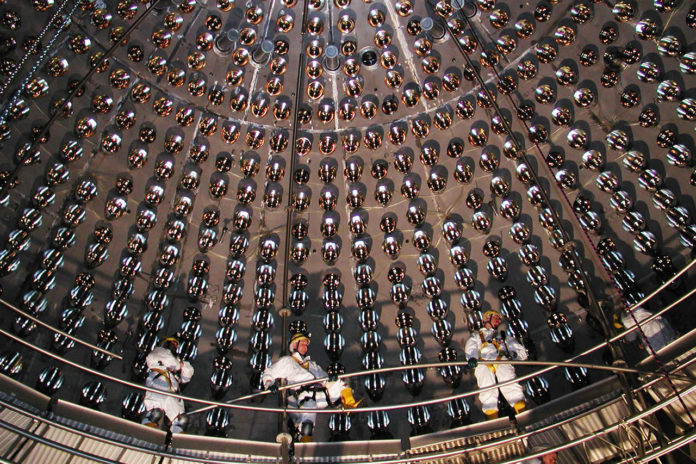The ‘CNO cycle’ refers to the Carbon-Nitrogen-Oxygen cycle, a stellar nucleosynthesis process in which stars on the Main Sequence fuse hydrogen into helium via a six-stage sequence of reactions.
The existence of the CNO cycle was first estimated in 1938, when researchers Hans Bethe and Carl Friedrich von Weizsacker independently proposed that the fusion of hydrogen in stars could likewise be catalyzed by the heavy nuclei carbon, nitrogen, and oxygen, in a cyclical series of nuclear reactions, in addition to proceeding according to the sequence of the proton-proton chain.
Despite indirect evidence from astronomical and astrophysical observations, direct experimental confirmation of the hypothesized stellar energy generation mechanism could not be easily obtained.
The attempts to unveil it focused on neutrinos, particles produced in abundance in these reactions.
Now, an international scientific collaboration called Borexino scientific cooperation at the INFN Gran Sasso Laboratories has detected neutrinos produced in the Sun by the CNO cycle (carbon-nitrogen-oxygen). It is an experimental result of historical value, which completes a chapter of physics that started in the 1930 decade of the last century.
The scientists used the ultrasensitive Borexino detector at the INFN’s Gran Sasso particle physics laboratory in central Italy. The implications of this new measure for understanding stellar mechanisms are gigantic: since the CNO cycle is predominant in the most massive stars than the Sun, with this observation, Borexino has reached the experimental evidence of what is the dominant channel in the universe for hydrogen burning.
By measuring the neutrinos produced by the CNO cycle, which is present in the Sun at 1% level, scientists provided the first experimental evidence of this additional energy generation mechanism’s existence.
Gianpaolo Bellini, professor at the University of Milan and INFN researcher, said, “Now we finally have the first groundbreaking, experimental confirmation of how the stars, heaviest than the Sun, shine. This is the culmination of a thirty years-long effort, which began in 1990, and of more than ten years of Borexino’s discoveries in the physics of the Sun, neutrinos and finally stars.”
Marco Pallavicini, professor at the University of Genoa and member of the INFN Executive Board, currently co-spokesperson for the experiment, said, “The detection of neutrinos produced in the CNO cycle announced by Borexino is the crowning of a relentless, years-long effort that has led us to push the liquid-scintillator technology beyond any previously reached limit, and to make Borexino’s core the least radioactive place in the world.”
With this measure, Borexino, who is nearing the conclusion of his scientific activity, after demonstrating how the Sun shines, also leaves the neutrino field with the enduring legacy of the first observation of CNO neutrinos, a revolutionary achievement obtained through an impressive experimental effort, which will remain for the future as one of the real successes of astrophysics and astroparticle physics.
Journal Reference:
- The Borexino Collaboration., Agostini, M., Altenmüller, K. et al. Experimental evidence of neutrinos produced in the CNO fusion cycle in the Sun. Nature 587, 577–582 (2020). DOI: 10.1038/s41586-020-2934-0
